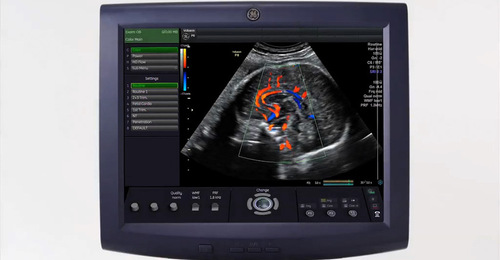Ultrasound Evaluation of Renal Artery Stenosis

Introduction
Hypertension affects up to 65 million adults in the United States. A small subset of these patients have renovascular hypertension due to obstruction of the renal arteries. Fortunately, this type of hypertension can be corrected with treatment of the offending renal artery stenosis. Many hypertensive patients are referred for duplex ultrasound to screen for the presence of renal artery stenosis. While ultrasound imaging with Doppler analysis is a useful tool for evaluation of the renal arteries, it is often underused because it can be technically challenging and time-consuming. This article discusses methods to improve results through optimization of scanning technique, patient positioning and enhanced understanding of the technical aspects of the examination.
Two methods are used in ultrasound evaluation of renal artery stenosis; a direct and an indirect approach. A combination of these methods is recommended to optimize results. The direct approach involves Doppler interrogation along the entire length of the main renal artery and any accessory renal arteries. The indirect approach involves evaluation of the segmental or interlobar arteries within the kidney. This technique infers stenosis of the main renal artery through recognition of alterations of the normal waveform shape obtained from the intrarenal arteries. Both methods will be discussed in detail.
Cindy A. Owen, RDMS, RVT
Diagnostic Ultrasound Services at Baptist Memorial Hospital Desoto
Southaven, MS

